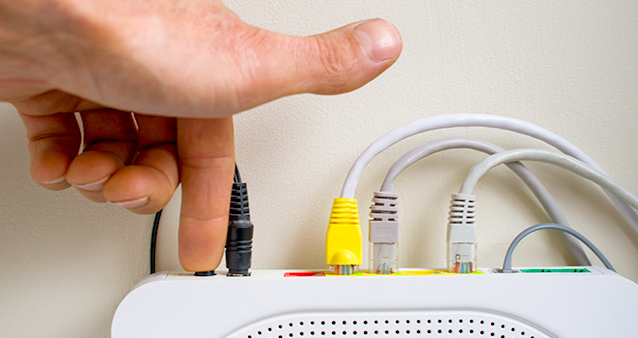About to Lose Your ADSL? Here’s What to Upgrade to and How to Upgrade with Ease

If ADSL is about to be discontinued in your area, don't be worried. Here's how a quick comparison will have you hooked up with a sweet new internet connection deal in no time at all.
You may have already heard that Openserve is discontinuing ADSL internet connection in areas where Openserve fibre has already been installed. Many internet service providers (ISPs) rely on its services, so if you're still on an old copper line, this is for you.
The good news is that this is a brilliant opportunity to upgrade your internet connection, and you don't even have to wait for fibre to be installed!
How much, and how quick?
The new world of working from home means our internet needs have changed – even more so if you've suddenly found yourself knee-deep in grumpy kids these last few months.
Before you start shopping, however, it's important to know what you (really) need. First of all: data. Lots and lots of data. Did you know, for example, that just one hour of videoconferencing can chew up as much as 1.2GB of data? Add a couple of kids streaming videos or classes, or gaming all day and it ends up being a lot more.
The difference between 10 Mbps and 50 Mbps? One very angry boss
Most fibre providers offer uncapped internet, usually a choice between 10, 20, 40, 50 and 100 Mbps. According to Webafrica, under 10 Mbps is closer to an ADSL line and is suited to very light browsing. If you stream Netflix or do lots of work video calls, you need something between 10 Mbps and 40 Mbps. In fact, this may have been fine if you did most of your work at the office, and didn't have to overload your home connection.
But if you're running a home office with multiple data-intensive devices, streaming, VoIP and video chats with large groups, you'll need something more than 50 Mbps. The last thing you need is to be that colleague, you know, the one whose video call never connects properly?
So how fast is fast enough? As a ballpark figure, a single user should be okay with a 10 Mbps line. If you're a household of two, double that to 20 Mbps, and add 5 Mbps for every additional user (make that 10 Mbps per additional teenager).
Read more: How to Work from Home Better
Fibre, LTE or 5G?
The fibre-optic networks replacing ADSL in many areas are much faster than their predecessors. ADSL transfers data via copper telephone lines and only offers maximum line speeds of 10 Mbps. That's the bottom end of most broadband fibre connections, which use fibre-optic cables that can run at speeds of about 100 Mbps, going up to 200 Mbps, even for home use.
If fibre is not being rolled out in your area (yet), look out for LTE. This wireless system runs on the 4G cellular network. Although it's not quite as fast as fibre, it's significantly quicker than ADSL, achieving speeds of up to 50 Mbps. And since it is cellular technology, you don't need a line to start using it. You can use our comparison tool to find an LTE package in your area – you'll see LTE deals side by side, making it easy for you to choose the offer that suits your needs and pocket.
You could also consider 5G, also wireless, but the widespread availability of 5G networks is only expected in 2021, so this may not be available in your neighbourhood for a while.
Still worried that you won't be better off with a change? Here's what TechCentral editor Duncan McLeod wrote on the subject late last year: "Telkom still has hundreds of thousands of DSL users on its books and moving them to new technologies (mainly fibre and 4G/LTE) will take some time. But it's the right move: copper is yesterday's technology, it's expensive to maintain, it's affected by the weather (especially thunderstorms) and criminals are stealing the stuff faster than Telkom can replace it."
So, whether you decide to go wired or wireless, your internet experience is likely to only get better.
Compare offers from a wide range of fibre and LTE service providers
Hippo's online comparison tool lets you compare fibre and LTE deals. It's free, easy to use and, best of all, it will help you find affordable deals from many local fibre and LTE providers.
Where is Openserve discontinuing ADSL?
You can find a full list of suburbs where ADSL will be discontinued here. Remember, these areas now have fibre coverage, meaning this won't be the end of internet connection for them.
This article is for informational purposes only and should not be construed as financial, legal or medical advice.
Hippo Blog Categories

































